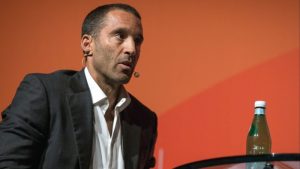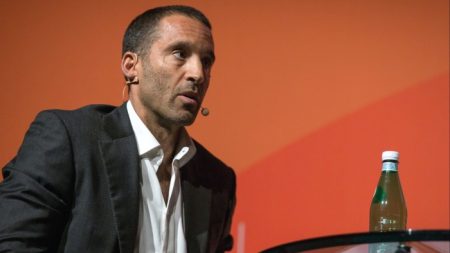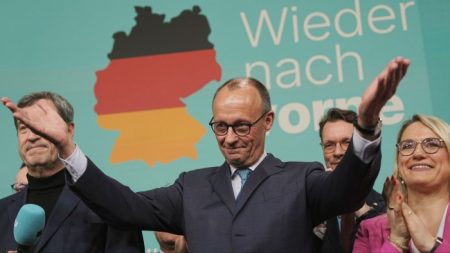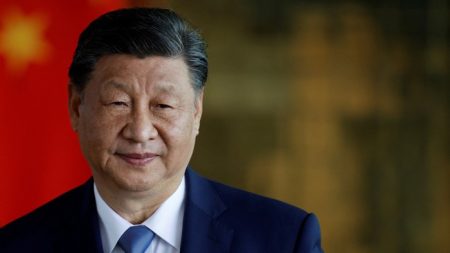Just three years ago, Sir Keir Starmer looked like he might end up as one of the most shortlived leaders in Labour party history.
Labour had just been trounced in English local elections and finished a miserable third place in Scotland, as well as losing its former stronghold of Hartlepool to Boris Johnson’s Conservative party.
Starmer, who had been party leader for only a year at that stage, issued a forlorn video message while standing in front of a wilting pot plant, admitting he was “bitterly disappointed”.
Baroness Jenny Chapman, one of Starmer’s closest allies, says he considered quitting that day. “Keir was very down, he is the kind of person who only wants to do a job if he can deliver, and he was asking himself if he could really deliver this,” she says. One shadow cabinet colleague told the FT at the time that Labour had “no chance” of winning the next election.
Yet just three years later, Starmer has engineered one of the most stunning transformations in recent political history — one which, if the opinion polls are to be believed, leaves him within touching distance of becoming the first Labour prime minister in 14 years.
Since those defeats in May 2021, Starmer has eviscerated his internal enemies, rewritten Labour’s rule book to his own advantage and shifted its political priorities in an effort to win back floating voters rather than please the party’s more radical membership.
That process culminated with the expulsion on Friday from Labour of Jeremy Corbyn, the veteran leftwinger who was the party’s leader at the last general election, when it suffered its biggest defeat for nearly a century.
With six weeks to go until another general election, Labour is about 21 points ahead of the ruling Conservatives in the opinion polls — leaving some Labour MPs in a mild state of disbelief at the speed of turnaround that Starmer has achieved since he became party leader in early 2020.
Critics have dismissed Starmer as a stodgy figure with a nasal voice who is yet to capture the imagination of the British public. Many supporters want the party to put forward a more positive message — and rely less on popular revulsion against the Conservative government.
Yet Starmer, a former director of public prosecutions who only entered politics nine years ago, has proved himself to have the sharp-elbowed discipline that all successful leaders need. He could be the latest seemingly stolid centre-left figure to gain power — after Olaf Scholz in Germany, Anthony Albanese of Australia and Joe Biden in the US.
“I often hear people say that Keir is not instinctively political,” says Josh Simons, director of Labour Together, a think-tank close to the party. “When will people wake up and decide that Keir is good at politics?”
For Starmer and his inner circle, Corbyn lost the 2019 election because his fiery radicalism inspired large numbers of leftwing members — but turned off swaths of voters.
Yet Starmer’s initial pitch to Labour did not involve a big shift to the centre. He presented himself as the figure who could end a long-running civil war inside the party by building bridges between leftwing members and its more centrist MPs.
He promised to maintain Labour’s leftwing economic policies while taking a more conventional approach to foreign policy than his “friend” Corbyn, a long-standing opponent of Nato and “American imperialism”.

Over time, Starmer began to both shift the tone of the party and to exert much greater control over its internal workings. In the process, he started to display a more steely side to his character. “He is a very decent bloke,” says Tom Baldwin, his biographer, “but he’s breathtakingly ruthless.”
Starmer gradually shed most of the 10 promises he had made when running for leader, which had included nationalising “rail, mail, energy and water” and increasing income tax for the highest earners.
He sacked from his shadow cabinet Rebecca Long Bailey, a leftwinger who had come second in the leadership race. For TV interviews, Starmer started to drape his office in a Union Jack.
With Labour in financial difficulties, he authorised a root and branch shake-up of the party’s bureaucracy with hiring freezes, reassignments and new financial controls.
In the autumn of 2021, he launched an audacious attempt to rip up the party’s rule book during annual conference in Brighton, which reduced the influence of the membership.
Starmer’s team had to beg for the help of two of the biggest unions, which swung behind him at the last minute — enabling a nail-biting 54:46 vote on the floor of conference.
The power grab was dubbed a “needless self-inflicted blow to democracy in our party” by leftwing pressure group Momentum, but Starmer was not finished.

His centrist allies also took over power of the party’s ruling national executive committee, which in March 2023 voted to prevent Corbyn standing as a Labour MP at the general election: he had already been suspended from the parliamentary Labour party in 2020 for describing antisemitism in the party as “dramatically overstated”.
On Friday, Corbyn was thrown out of the party after he confirmed he would stand as an independent parliamentary candidate.
The slate of new candidates for July’s election has been shorn of any “hard left” politicians and instead features a long list of moderate figures.
Starmer often cites his determination to remake Labour as proof that he will be a hard-headed prime minister: “Sometimes you have to be ruthless to be a good leader,” he recently said.
Allies insist there is a softer side to his character, for example when he bought a house for his sister after she got divorced. Others point to his pro bono work as a defence lawyer.
“He can tap into ruthlessness where necessary but he’s full of compassion for people, he’s very loyal to colleagues and former colleagues,” says Sam White, his former chief of staff. “Whereas Boris Johnson was ruthless with no compassion.”
Starmer’s tack to the political centre has infuriated some previous supporters. His relentless focus on “fiscal discipline” — to try to close down Tory attack lines about Labour’s spendthrift tendencies — has further alienated the left.

“He played us like a fiddle, pretended to be a socialist and now it turns out that he’s a red Tory, a fake, as far as I’m concerned he’s as bad as Blair,” says one Corbyn ally, referring to the former leader who won three elections but was disdained by many on the left. “Of course it sticks in the craw.”
But Chapman defends the way Starmer dropped the pledges he made in 2020. “When he ran for leader of Labour . . . there was a pandemic, the Tories hadn’t crashed the economy, he was talking to Labour members,” she says. “When you’re asking to be prime minister of the whole country it’s about the whole nation and it’s not just about you any more.”
In recent months Starmer and shadow chancellor Rachel Reeves have continued to dilute the party’s policy agenda, for example slashing the scope of a £28bn a year “green prosperity plan” to less than a fifth of its previous size. A “New Deal” package of employment measures has been largely rewritten since it was originally drawn up in 2021.
Yet both policies still remain part of a Labour agenda, which contains flashes of leftwing radicalism, including charging VAT on private schools and ending new North Sea oil and gas licences.
His political shifts have left him open to the charge of opportunism. Rishi Sunak, the Conservative prime minister, said on Thursday that Starmer had “changed his mind on almost every major issue that I’ve had to debate with him over the last 18 months”.
Starmer has been blessed, however, by some epic mis-steps by his political opponents: whether Boris Johnson’s “partygate” scandal, Liz Truss’s disastrous “mini” Budget or the financial scandal that has enveloped the Scottish National party.
John McDonnell, who was shadow chancellor under Corbyn, has described Starmer as a “lucky general” who is likely to win the election “almost by default”.
But one ally insists that Starmer made his own political weather. “Yes the Tories have had their own issues, but the Labour party did not turn itself around on its own, that was not inevitable.”
White says opposition parties are limited in what they can do: “You have one thing you can do: whatever it takes to become a credible alternative government and be seen as such, that’s it,” he says.
“If you don’t take that step, it means that on the rare occurrences when the public do stop to listen to the opposition, they will glance at you and say, ‘Nah, I can’t imagine them in Number 10.’”
Even now, some Labour figures are anxious about whether their poll lead is solid. Some remember the 2015 general election when polls gave the party under Ed Miliband a bogus lead.

“I just don’t think Labour people let themselves believe it. Labour needs to go on the offence but also guard its flank and rearguard all the time,” says Lord Neil Kinnock, the former party leader who rebuilt Labour after its defeat in the 1983 election but failed to win the 1992 general election despite high expectations.
Labour is fully aware of the myriad challenges that it will face should it win the election. This week the FT revealed that Sue Gray, Starmer’s chief of staff, had drawn up a dossier of some of the biggest crises he would have to grapple with — including failing councils and universities, the collapse of Thames Water, public sector pay disputes and overcrowded prisons.
A new Labour government would be confronted by painful fiscal constraints, partly the result of anaemic economic growth in recent years. It would also need to navigate the toxic politics of Britain’s relationship with Europe.
But colleagues say Starmer is realistic about the task he would face. Kinnock, who is now 82, says his successor has an “adamantine” approach to the job in hand. “What’s clear is he has an absolute steadiness,” he says. “Some people see this as him being boring but he’s not . . . he is a grown-up.”
Read the full article here















